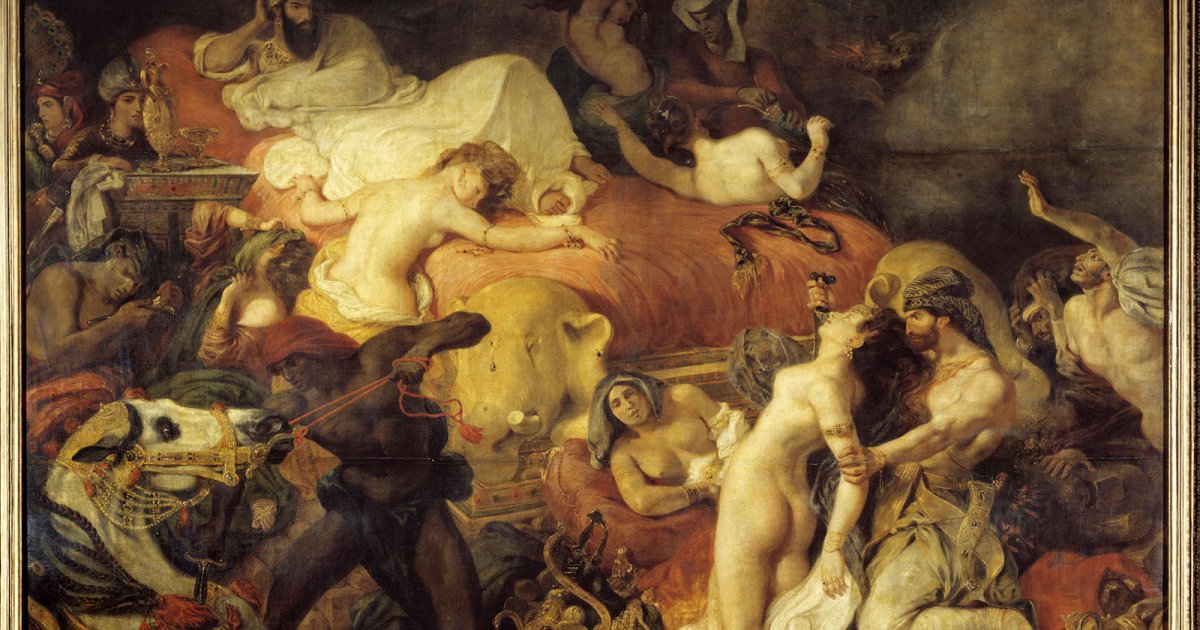LOUVRE MUSEUM, Delacroix Denon Wing Hall 77
 Language: English / USA
Language: English / USA
You are now looking at a painting called The death of Sardanapalus By Eugène Delacroix, the most iconic and exuberant exponent of French romantic art. Delacroix is the most prominent portrayer of the cultural life of the first half of the 19th century, with a successful career, an expansive character, a long life, a rich and sometimes even exaggerated painting style and canvases of monumental size and variety.
This is his story, in a nutshell: he was born in 1798 into a wealthy bourgeois family and entered the world of painting at the age of 21 when he met Géricault. He immediately showed a predilection for heroic subjects and situations interpreted with strong light and colors, and adopted an existential artistic course to which he devoted much of his life.
The director of the Academy of Paris, however, suggested that he moderate the violence of his representations and intensity of his brushstrokes; if you take a look at his works you'll see that a strong character and inflexible temperament such as his are not easy to tame, which is in evidence in this masterpiece from 1827.
Here you see a representation of the impressive massacre ordered by the eastern ruler Sardanapalus, who according to legend ordered everything he possessed in life - his horses, his dogs, even his squires and the women in his harem - to be put to death alongside him when he felt death approaching. The tyrant, at the back of the painting, watches the scene with cold indifference as he lies on his bed.
Like a kind of exotic and extravagant parody of The Raft of the Medusa, Delacroix depicts a tangle of bodies and expressions that incorporate death, despair, and prayer.
Now move on to another Delacroix masterpiece entitled Liberty Leading the People.
This was painted in 1830 and is the "official", unanimously acknowledged and upheld version of the revolution. The heroine who appears bare-chested wearing a cap and carrying a flag is Marianne, a symbol of France. If you look at her head, you will see there's an intense ring of light around it, like a halo.
FUN FACT: during the liberal movements of 1830, Delacroix enlisted in the national guard, but never took part in any armed conflict; this did not prevent him depicting himself in the role of popular hero in the painting Liberty, in the front line of the barricades; the man in the top hat holding a rifle.
And with this we have finished our tour of the Louvre Museumends. MyWoWo thanks you for staying with us, and will see you at the next Wonder of the World!



